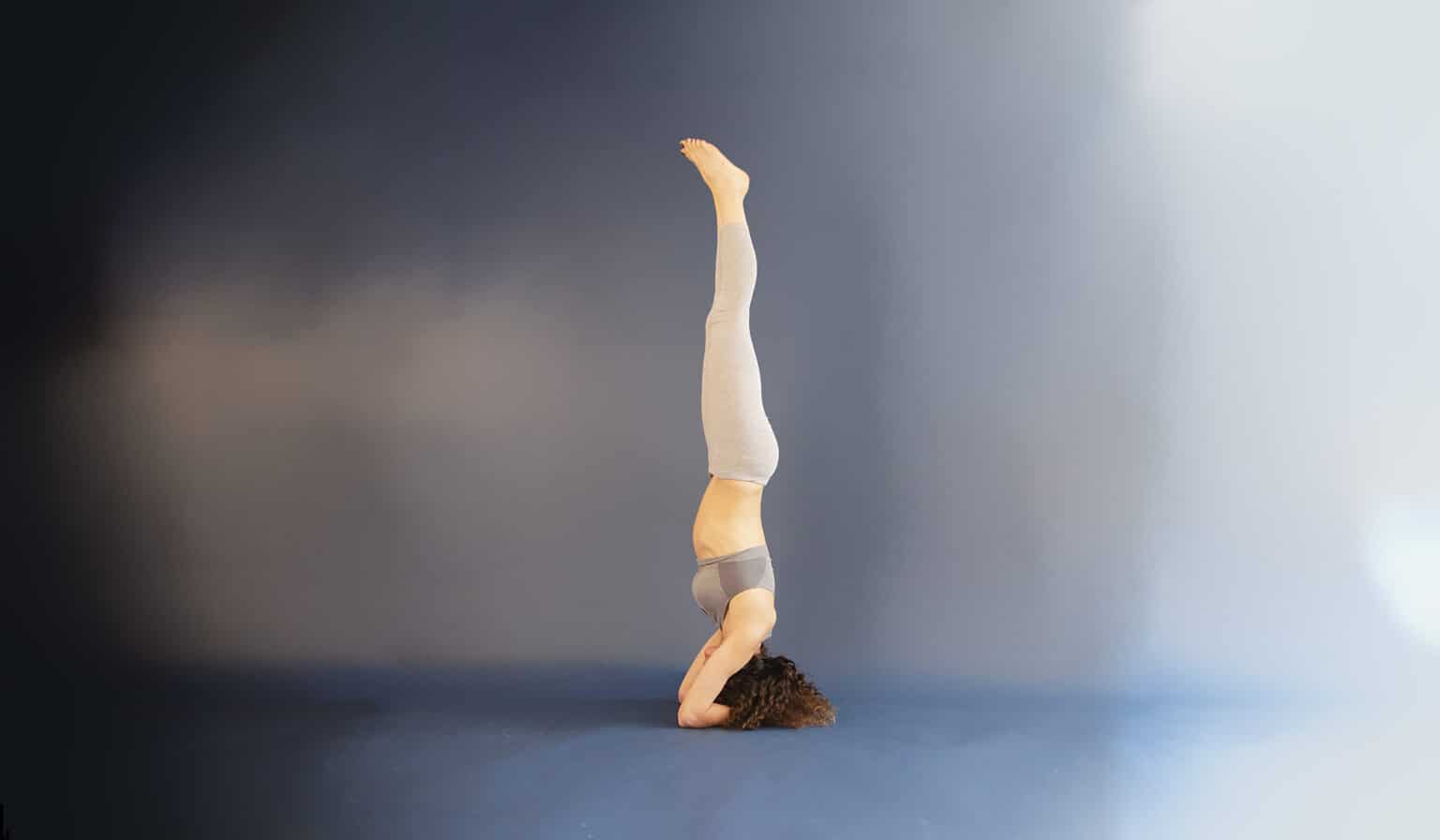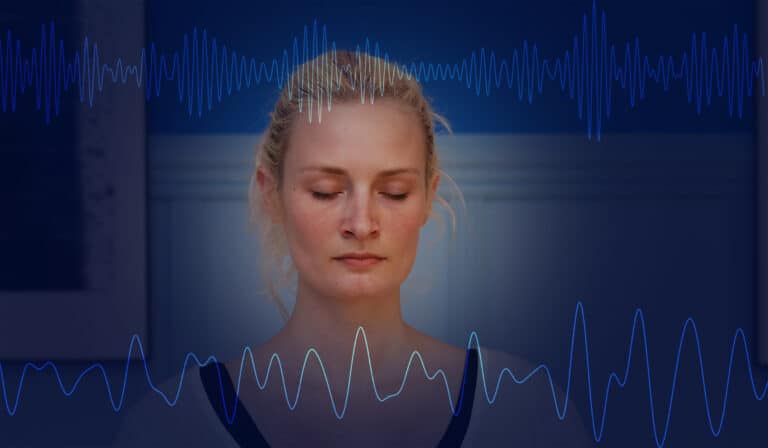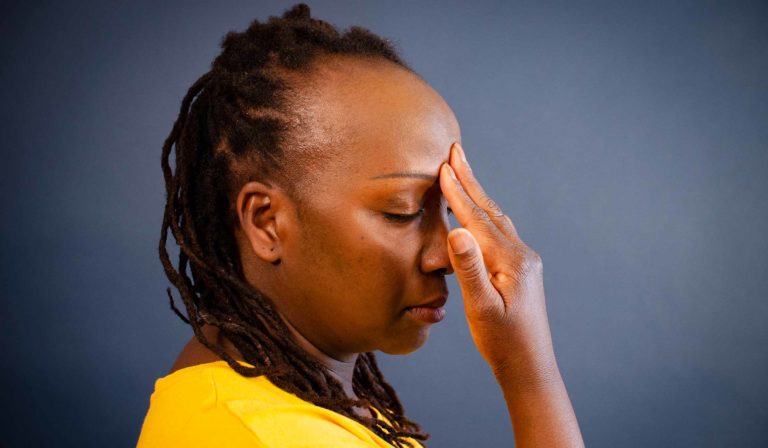This post is about how to learn headstand without a wall. You will discover that a wall is an unnecessary distraction. Doing headstand without support is a safer and quicker way to learn it. Sirsasana or headstand is one of the best yoga poses. And the good news is that most of us can learn it with the right approach.
This article will teach you the same approach to headstand that I have used for twenty years. I will tell you precisely what you need to do to move forward step by step and safely learn the most helpful headstand form in the least possible time.
How long time will it take me, you may ask? Most dedicated yoga students manage to learn the full headstand. Some get it quickly; I have seen people get it on the first try on a couple of rare occasions. For most, it takes weeks or months of regular exercise.
Is headstand suitable for you?
There are a few contraindications to the headstand. Before you attempt it, verify that they don’t involve you. If you suffer from the following conditions, you should practise with great caution and only after advice from a medical professional.
- Brain haemorrhage
- Serious hypertension
- Problems with neck vertebrae
- Glaucoma
- If you are very overweight
Learn easy head stand first
The first step to learning full headstand is to be comfortable with the accessible version of headstand that I call the clown pose. The starting position of this easy headstand is the same as for the tripod headstand. You have your head on the floor and your hands placed on the floor as well. But then, instead of raising your legs to a vertical position, you put your knees on your elbows.
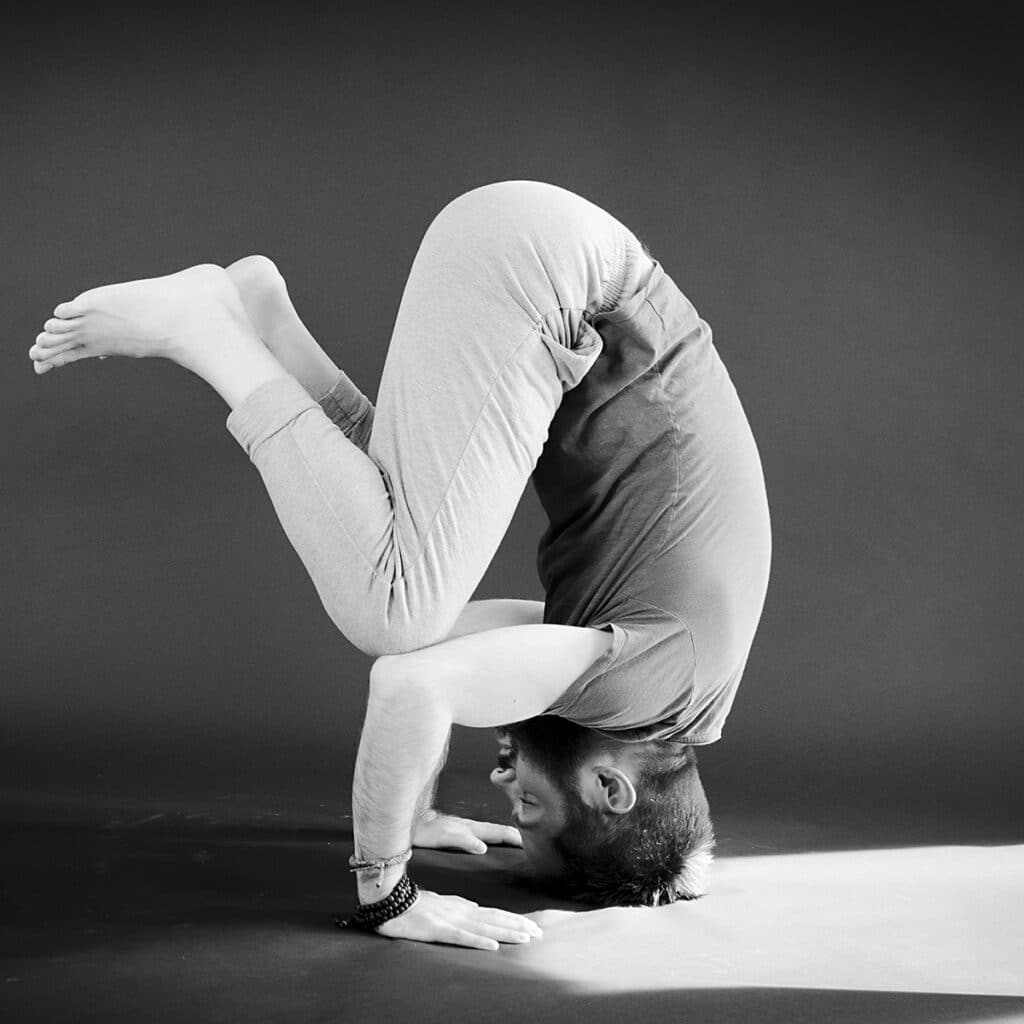
The clown pose is much more gentle than a full headstand since it distributes your body weight to your forearms and hands, thus relieving your neck. Hence it is an excellent pose for training your neck and core muscles as well as your balance. Furthermore, by doing the clown pose, you will be able to identify any problems before moving on to a posture that will put a lot more strain on your body.
So before going on to full headstand train by using the instructions in my article on the easy preliminary headstand, the clown pose.
Why I recommend learning headstand without a wall
Once you have trained with the clown posse for some time and are comfortable with it, it is time to start with full sirsasana. Some teachers recommend you to train against a wall. I don’t. The primary reason is that even though a wall prevents you from falling on your back, you could still fall to the side, which can put much more stress on your neck than a backward fall.
Another crucial reason is that a wall won’t give you self confidence. Once the wall is no longer there, you still have to do it on your own. What I recommend instead of a wall is to learn to fall softly from the start. I think that is an essential skill to master and we will get to how to do that shortly.
Preparing your mat and your space
When you are doing headstand, it is crucial to have space around you if you fall. So move furniture and objects if you are practising at home.
It can also pay off to use the right kind of yoga mat. The thinner types of latex or rubber yoga mats are not stellar for headstand. They are so light that it will be uncomfortable to fall. If you are using such a mat, I suggest you bolster it by placing a folded blanket on top of it. When I do the headstand, I use a futon yoga mat. I find those excellent for classical static yoga poses.
Note that you don’t want your mat to be too thick either. In that case, it can make the pose less stable.
Use your forearms for adequate neck support
There are different ways of doing the headstand. One method is to use the same base position as the clown pose. From the clown, you can quickly raise your legs and your trunk to a vertical position. This is called a tripod headstand, and it is tempting to learn sirsasana in that way. However, though it is easy to learn, it is less stable, tougher on the neck and much more strenuous to hold than in the version I recommend.
What I suggest is that you support your body on your forearms. That way, you will relieve your neck by placing some of the weight on your arms. On the other hand, in the tripod version, your arms and hands will be there for balance only, and your neck will carry your entire weight.
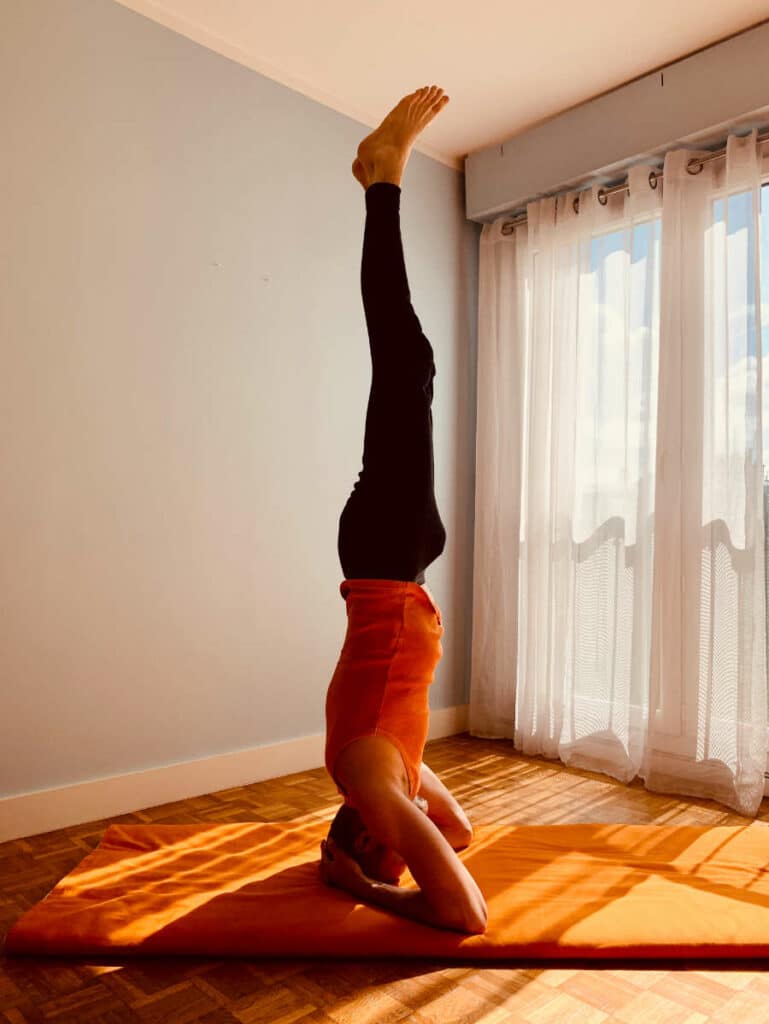
Do this to get into the base position for headstand with forearm support:
- Sit on your knees behind your mat. If you wish, you can fold a part of your mat once or place a folded blanket in front of you to make it softer for your head.
- Place your thumbs on the inner side of your elbows to measure the proper distance between them.
- Place your elbows on the mat in front of you.
- Without changing the space between your elbows, interlace your fingers.
- Place the top of your head before your hands. Place your palms and fingers, so they support the back of your head.
Voila, this is the base position.
How to fall out of headstand
As mentioned already, before attempting full sirsasana, you must learn to fall out of it softly and safely. Luckily that is not hard to learn. You will likely lose your balance many times until you have fully mastered the pose. Therefore, being able to fall correctly is crucial.
The way to fall from the pose is to flex your neck and bring your chin to your chest. Thus, making your back round, you will come out of the headstand in a forward roll. The rolling movement will entirely absorb the energy of the fall, and there will be no hard impact. On the other hand, you can hurt yourself if you don’t roll out of the pose and instead fall rigidly like a tree trunk.
Make sure this fall becomes your natural reflex when you feel you are about to lose balance. Don’t try so hard to counteract instability that you can’t follow through with a correct fall. For your safety, it is essential not to fall to the side.
Learn to fall out of headstand
Now, let’s look at an exercise that I suggest you do to learn to fall. From the base position, walk forward until your back is on a vertical straight line. Now give yourself a push and roll over on your back. Practice this a few times before attempting to come into headstand.
Getting into headstand
Once you are comfortable with falling, you are ready to go on. From the base position, proceed like this:
- In the base position, raise your knees from the floor. With tiny steps, walk forward until your back is on a vertical straight line.
- Raise your feet from the floor. Find balance with your legs bent and your heels close to your buttocks.
- Once you can stay on your head with legs bent without difficulty, then raise your knees, still keeping your heels close to your buttocks.
- Unfold your lower legs and reach the final position.
In the final position, most of your weight is on your head. Consciously use your arms to carry some of your body weight, relieving your neck.
Now, while training to get to the final position, you will likely lose your balance many times. At those times, pull your chin towards your chest and roll down onto your back, just like you have already been training to do.
If fear of losing your balance is an issue for you, then practice falling out of the vertical position until all fear of falling is gone.
Learning to stay in headstand without a wall
The first times you manage to get into the final position, you will only be able to stay a few seconds. Gradually the time you can maintain your balance will become longer and longer. Finally, balance will not be an issue at all.
You have now learnt to do headstand without a wall, and you will be able to stay until the pose becomes too strenuous to keep. With more training, your body will adjust to the posture, and you will be able to hold it longer and longer. To master headstand, set a goal to be able to hold it comfortably for ten minutes.
The key to being comfortable in headstand is to find the exact balance point. Because of a fear of falling, many beginners will not raise their legs into the vertical position. Ask someone to check you or film you from the side and the back to verify that you are straight on the plumb line.
When and how to practice for Sirsasana
Practice yoga poses no sooner than a couple of hours after your last meal. That is particularly true for all inversions. As long as you give yourself enough time to digest, you can then do headstand at any time.
Are you determined to learn sirsasana without a wall? Then, I recommend you practice 5 minutes per day until you can stay in the pose without losing your balance. You might need a week, maybe a month; some may even need more time.
I recommend practising sirsasana independently outside of your regular yoga practice since getting in and out of the pose for an extended time is a bit disturbing for your body and nervous system. Start your training time in shavasana to build up calm and focus. End your practice by standing still for at least half a minute with closed eyes and then a few minutes of savasana again.
If you do an asana sequence or a session that includes sirsasana (such as the big classical programme here on Forceful Tranquility ), do the following: Attempt the pose once or twice, but if you can’t manage to stay, switch to the clown pose to benefit from the sequence.
Tips for learning headstand
-Train regularly
Practice regularly to develop balance. To learn headstand without a wall, a good sense of balance is essential.
-Visualise success
Visualise yourself in headstand right before attempting it. Make a mental movie where you see yourself sitting in the base position and confidently getting into the full pose. Such a visualisation will condition you for success.
-Make an affirmation
If you find visualising a challenge, make an affirmation that you will make it. Say to yourself something like “I can easily stay in full headstand” several times before you practice.
-Meditate for ten minutes before headstand
To be perfectly calm when you practice, meditate for ten minutes before the headstand. Or do a 10-minute shavasana.
-Meditate in the pose
To calm yourself down, concentrate on your breath or your body while in the pose. That will help you not to let counterproductive thoughts carry you away.
Key takeaways
- Most people can learn headstand. It is better to avoid shortcuts and learn the pose without the help of a wall from the beginning. What you need to do is to learn to fall softly in case you lose your balance.
- Though it is tempting to do the tripod headstand, learn the pose with the proper support of your forearms. That is more gentle on the neck, and you will find it easier to stay for an extended time.
